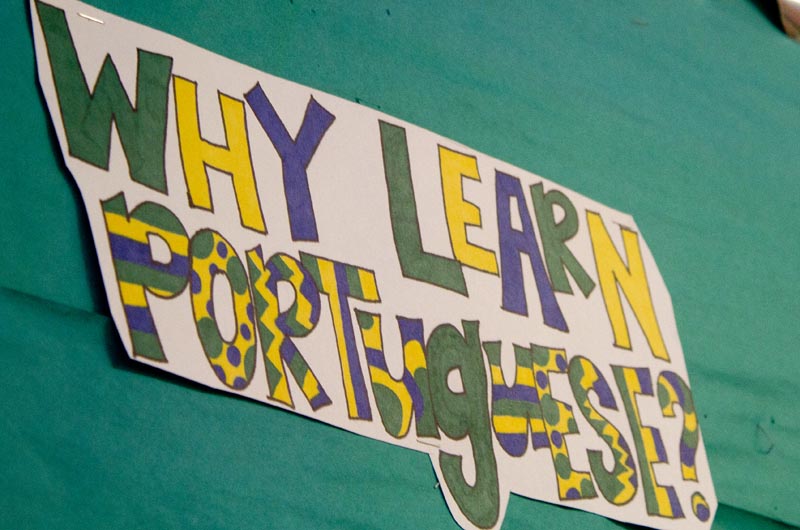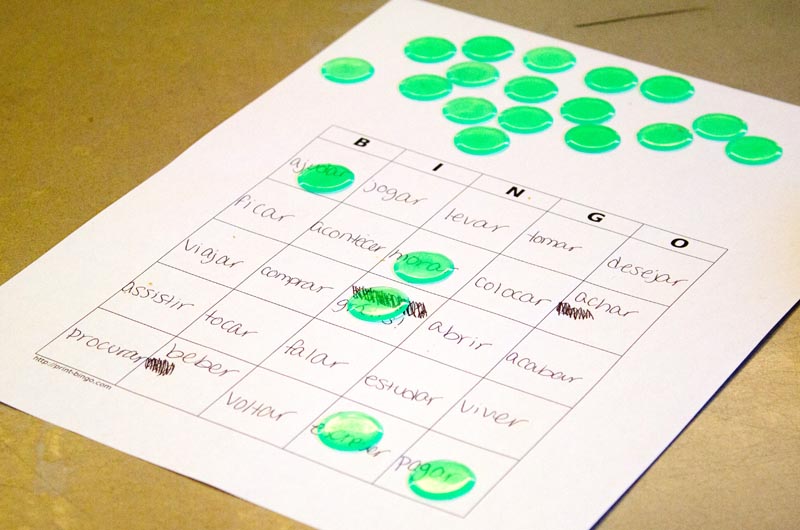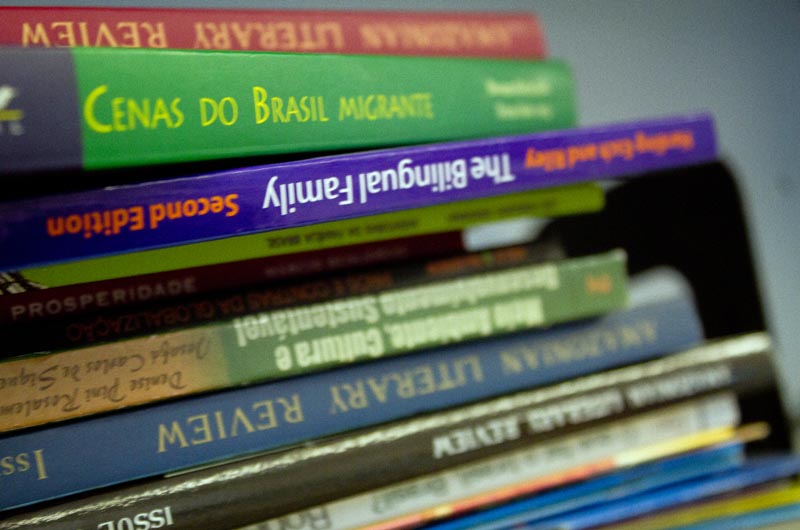For the more than 60 students in the newly revived Portuguese program at the regional high school, falar portugues (speaking Portuguese) is becoming easier. Portuguese joins French, Spanish and German as languages offered by the high school. But German, the program with the lowest enrollment, is being phased out.
World languages department chairman Justine DeOliveira said during a recent high school committee meeting that the new program was already thriving despite being a late introduction to this year’s curriculum. There are two full sections of Portuguese 1 and one full section of Portuguese 3. Portuguese 3 is for heritage students — those students who have grown up speaking the language at home but are not proficient at reading or writing.
“It’s just a language that’s so important to the Island community that it makes sense,” Mrs. DeOliveira said in a recent interview. “It was great to have the opportunity to bring it back.”
In higher education, Portuguese study is on the rise. A study published last month by the Modern Language Association of America found that while college enrollments in foreign language had fallen across the board from 2009 to 2013, Portuguese had seen a rise of
10.1 per cent. It is the 13th most popular language for college students, ahead of Korean but behind biblical Hebrew. The study authors attribute the rise to increased interest in Brazil. Portuguese was first offered at the high school in 2002, but a host of complications led to a slow demise for the program. “Like all new programs, they need time to grow,” Mrs. DeOliveira said. Teacher turnover was a challenge, as well as whether or not the focus should be on Portuguese or Brazilian Portuguese. When the economy took a downturn, budget cuts led to the end of Portuguese.
Still, the class had an impact on at least one of its students. Jane McGroarty Sampaio, who now teaches the classes at the high school, studied it as a senior the first year it was offered — along with French and German. Mrs. McGroarty Sampaio continued to take Portuguese in college, spending two semesters in Rio de Janeiro, and on graduation returned to teach the regional high school class. But her position was just a three-fifths one. The Portuguese program was already on its way out by that time.
“We found at that point the school is not big enough to sustain four languages,” Mrs. DeOliveira said. “It would take a lot of part-time teachers to meet the needs of the various courses.”

When the school’s full-time German teacher decided to move off-Island recently, the administration found itself at a turning point: search for a new German instructor or begin making the switch back to Portuguese. Mrs. DeOliveira began to have meetings with acting principal Matt D’Andrea and guidance department chair Michael McCarthy. The group decided that the phase-out, phase-in model would be best, and Mrs. McGroarty Sampaio returned to teach both languages. “Hiring someone here on the Island to teach a world language is challenging to begin with,” Mrs. DeOliveira said.
“Jane was able to fit the needs of teaching both German and Portuguese.”
Room 204 is currently decorated for both languages. There is a map of Deutschland on one end of the bulletin board, and a map of South America on the other.
One of the major decisions made when putting the program back in place was to teach Brazilian Portuguese. Though the language is written the same way as Portuguese from Portugal, there are differences in levels of formality and the meanings of words, as well as pronunciation.
“In mainland Portuguese, they say it really short and quick, and cut off a lot of the endings,” Mrs. McGroarty Sampaio said. “Brazilian Portuguese has a lot of over enunciation.”
Teaching Brazilian Portuguese is still uncommon in high school curricula.
“It is very up and coming,” Mrs. McGroarty Sampaio said. “There’s more and more every year, so we’re right with the trends.” Still, finding materials geared specifically to high school has been one of the biggest challenges.
Besides the curriculum, there was the matter of developing from scratch a heritage language course for the students who have grown up speaking the language at home. There has never been one offered before — in any language — at the high school, so Mrs. McGroarty Sampaio has been researching the best way to teach it.
“It’s basically assumed that they can speak it,” she said. The class is instead based on developing reading and writing skills, and is conducted “One hundred per cent in Portuguese, or at least that’s the goal,” Mrs. McGroarty Sampaio said. Since most of her students were born in the U.S., and all of their education has been in English, they occasionally need to be reminded to use Portuguese.
The heritage class “honors the fact that they already speak another language, and it gives them credit,” Mrs. DeOliveira said. “If you’re looking at some college entrance requirements, that already gives them three years of a language.”










Comments (4)
Comments
Comment policy »